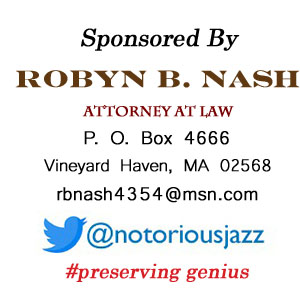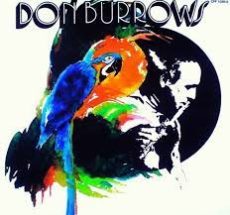
Daily Dose Of Jazz…
Donald Vernon Burrows was born on August 8, 1928 Marrickville, New South Wales, Australia and attended Bondi Public School. In 1937, visiting flutist and teacher Victor McMahon inspired him to start learning the flute, beginning on a B-flat flute. By 1940 he was captain of the Metropolitan Schools Flute Band and studying at the Sydney Conservatorium of Music.[2]
In 1942, Burrows had begun playing clarinet and appeared on The Youth Show, a Macquarie Radio show. In 1944 he was invited to play and record with George Trevare’s Australians. He became well-known in Sydney jazz circles and was performing in dance halls, nightclubs and radio bands.
During the 1960s and 1970s, Burrows had many engagements in Australia and the United States, including six years performing at the Wentworth Hotel in Sydney. In 1972, he was invited to perform at the Montreux Jazz Festival[4] and later the Newport Jazz Festival.
He received his first gold record in 1973 for his record Just the Beginning, instigating the first jazz studies program in the southern hemisphere, at the New South Wales Conservatorium of Music. He was appointed a Member of the Order of the British Empire (MBE) and appointed Chair of Jazz Studies at the conservatorium.
Though he mostly performed to classical music audiences through tours with Musica Viva and the Australian Broadcasting Corporation concert series, he had an extensive recording career with his groups and performed on albums by others. He also worked with Frank Sinatra, Dizzy Gillespie, Nat King Cole, Oscar Peterson, Tony Bennett, Stéphane Grappelli, Cleo Laine, and the Sydney Symphony Orchestra.
His arthritis from age 38, though making it somewhat difficult to play, never stopped him. In later years he had Alzheimer’s disease and lived in a nursing home in northern Sydney. Saxophonist, flutist and clarinetist Don Burrows transitioned on 12 March 12, 2020, aged 91.
More Posts: bandleader,clarinet,flute,history,instrumental,jazz,music,saxophone
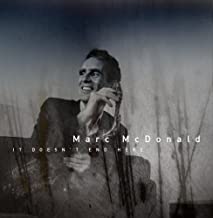
Daily Dose Of Jazz…
Marc McDonald was born in London, England on February 8, 1961 and lived there for six years before his parents moved to Princeton, New Jersey, where he grew up. Since the 1980s he has led groups in the New York City metropolitan areas as well as Honolulu, London and Athens. Releasing his debut CD as a leader, It Doesn’t End Here, it features his own compositions and the inventive arrangements of standards, drawing from mainstream jazz, Brazilian, and New Orleans R&B influences.
He has been equally active as a sideman and has been a member of award-winning composer Jamie Begian’s big band since 1998, appearing as a featured soloist on the band’s CD Trance.
In 1990, McDonald was among ten jazz composers invited to the ASCAP/Louis Armstrong Jazz Composers Workshop at New York’s Lincoln Center. Always the student, he attended the BMI Jazz Composers Workshop in New York for several years. Between 1991 and 1996 he was invited to premiere works for jazz chamber ensemble, solo saxophone, and saxophone quartet.
As an educator he has held a position for five years as a member of the artist faculty at a private music school in Princeton, and is currently in private teaching practice. Saxophonist and composer Marc McDonald continues to explore the world of jazz.
More Posts: bandleader,composer,history,instrumental,jazz,music,saxophone
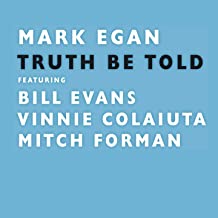
Daily Dose Of Jazz…
Mark Egan was born on January 14, 1951 in Brockton, Massachusetts and was influenced by his father, studying trumpet at age 10. Playing the trumpet throughout high school, he began playing the bass when he was fifteen. While attending the University of Miami’s Frost School of Music, initially a trumpet student, he studied with Jerry Coker. He switched from trumpet to bass part way through the program. His teachers included Jaco Pastorius, Dave Holland, and Andy LaVerne. While in Miami he became friends and performed with Ira Sullivan, Pat Metheny, Danny Gottlieb, Clifford Carter.
After graduate school, in 1975 Egan went on tour with Eumir Deodato and the Pointer Sisters and recorded with David Sanborn. Two years later, working as a studio musician in New York City, he met Joe Beck and Steve Khan. He then joined the Pat Metheny Group until 1981, before starting the jazz fusion band Elements with the Group’s drummer, Danny Gottlieb. They were joined by saxophonist Bill Evans and keyboardist Clifford Carter. They recorded and toured through the 1990s. During the 1980s and Nineties, he was a member of the Gil Evans Orchestra.
He founded his own record label, Wavetone Records and has made three music videos: Om Yoga & Meditation, Music on the Edge, and Bass Workshop. He has appeared on the soundtracks of movies including Two Moon Junction, The Object of My Affection, You’ve Got Mail, The Color of Money, Rollover, Quick Change, Blown Away, and A Chorus Line. He recorded an album, Urge, with trumpeter Forrest Buchtel, Jr., featuring, among other things, the theme from CNN Headline News.
Egan has toured and recorded with jazz artists including Stan Getz, Gil Evans, John McLaughlin, Larry Coryell, Pat Martino, Pat Metheny, Michael Franks, Jim Hall, Bill Evans, Lew Soloff, Paul Shaffer, rock and pop musicians and The Pointer Sisters, Sting, Arcadia, Roger Daltrey, Joan Osborne, Marianne Faithfull, Carly Simon, Art Garfunkel, Judy Collins, Sophie B. Hawkins, Bryan Ferry, Joe Beck, as well as Brazilians Airto Moreira, Flora Purim, and Toninho Horta.
Bassist and trumpeter Mark Egan continues to perform and record.
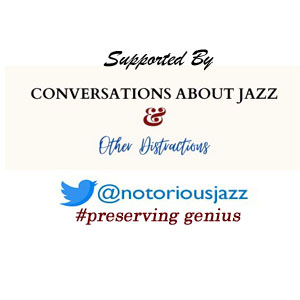
More Posts: bandleader,bass,history,instrumental,jazz,music,trumpet
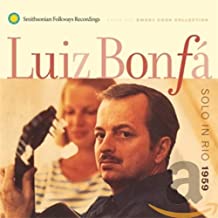
Daily Dose Of Jazz…
Luiz Floriano Bonfá was born on October 17, 1922 in Rio de Janeiro, Brazil. He studied with Uruguayan classical guitarist Isaías Sávio from the age of 11 and these weekly lessons entailed a long, harsh commute by train, 2 1/2 hours one way and on foot from his family home in Santa Cruz. Given his extraordinary dedication and talent for the guitar, Sávio excused the youngster’s inability to pay for his lessons.
He first gained widespread exposure in Brazil in 1947 when he was featured on Rio’s Rádio Nacional, then an important showcase for up-and-coming talent. In the late 1940s Bonfá was a member of the vocal group Quitandinha Serenaders. Some of his earliest compositions such as Ranchinho de Palha, O Vento Não Sabe, were recorded and performed by Brazilian crooner Dick Farney in the 1950s and his first hit song was De Cigarro em Cigarro recorded by Nora Ney in 1957.
Farney introduced Luiz to Antônio Carlos Jobim and Vinicius de Moraes, the leading songwriting team behind the worldwide explosion of Bossa Nova. He collaborated with them on de Moraes’ anthological play Orfeu da Conceição, which several years later gave origin to Marcel Camus’ film Black Orpheus. For the film he wrote Samba de Orfeu and Manhã de Carnaval, the latter of which Carl Sigman wrote English lyrics and titled the song A Day in the Life of a Fool, which has been among the top ten standards played worldwide, according to The Guinness Book of World Records.
As a composer and performer, Bonfá was at heart an exponent of the bold, lyrical, lushly orchestrated, and emotionally charged samba-canção style that became a highly visible ambassador of Brazilian music in the United States beginning with the famous November 1962 Bossa Nova concert at New York’s Carnegie Hall.
Bonfá worked with American musicians such as Quincy Jones, George Benson, Stan Getz, and Frank Sinatra, recording several albums while in U.S. Also of note is his “The Gentle Rain”, with lyrics by Matt Dubey, and “Sambolero”.
Composer and guitarist Luiz Bonfá, who recorded some five dozen albums, passed away from prostate cancer at 78 in Rio de Janeiro on January 12, 2001.
More Posts: bandleader,composer,guitar,history,instrumental,jazz,music
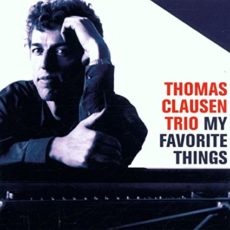
Daily Dose Of Jazz…
Thomas Clausen was born on October 5, 1949 in Copenhagen, Denmark and grew up in a musical home with his father playing a strong and able jazz piano in swing style, his mother from a family of singers. He began playing very young with great artists of jazz and his energetic and lyrical piano playing was discovered by Dexter Gordon in 196. During that same year he joined Palle Mikkelborg’s projects and groups and was soon playing regularly with the bass players Niels-Henning Orsted Pedersen, Bo Stief, and Mads Vinding, as well as with the drummers Alex Riel, Bjarne Rostvold, and Kasper Winding.
Accompanying a number of international jazz stars visiting Copenhagen, Thomas has performed with Ben Webster, Elvin Jones, Jan Garbarek, Joe Henderson, Phil Woods, Lee Konitz, Stan Getz, Chet Baker, Eddie ”Lockjaw” Davis, Jackie Mclean, Gary Bartz, and Johnny Griffin, just to mention a few. In the mid 80’s he was a regular member of the Peter Herboltzheimer International Big Band in Germany.
Clausen formed his own band in 1978, when he started Mirror, a group that recorded the first LP with his own compositions and included Jan zum Vohrde on saxophone and flute, bassist Ole Skipper Moesgaard, and Aage Tanggaard on drums. 1979 saw him leading his first jazz trio, with bassist Niels-Henning Orsted Pedersen and once again Tanggaard on drums, releasing two albums by 1983. Towards the end of the decade another trio emerged with Mads Vinding and Alex Riel and participated in the first Jazzpar Prize concerts in Copenhagen, Odense, and Paris in 1990, joined by with Gary Burton. The collaboration with Burton lasted a couple of years and led to two recording sessions.
Through the Nineties he delved into Brazilian music, recording and performing with many who were living in Denmark and Germany. His Brazilian Quintet continued into the new millennium, performing and touring throughout Europe. At 67, pianist, composer, arranger and bandleader Thomas Clausen has received the Ben Webster Prize, The Jasa Prize, The Fanfare Prize, and The Danish Society for Jazz, Rock and Folk Composers Prize, received support from the Danish Arts Foundation for fifteen consecutive years from 1993 to 2007 and continues to compose, perform as a leader and co-leader and to tour.
More Posts: piano




